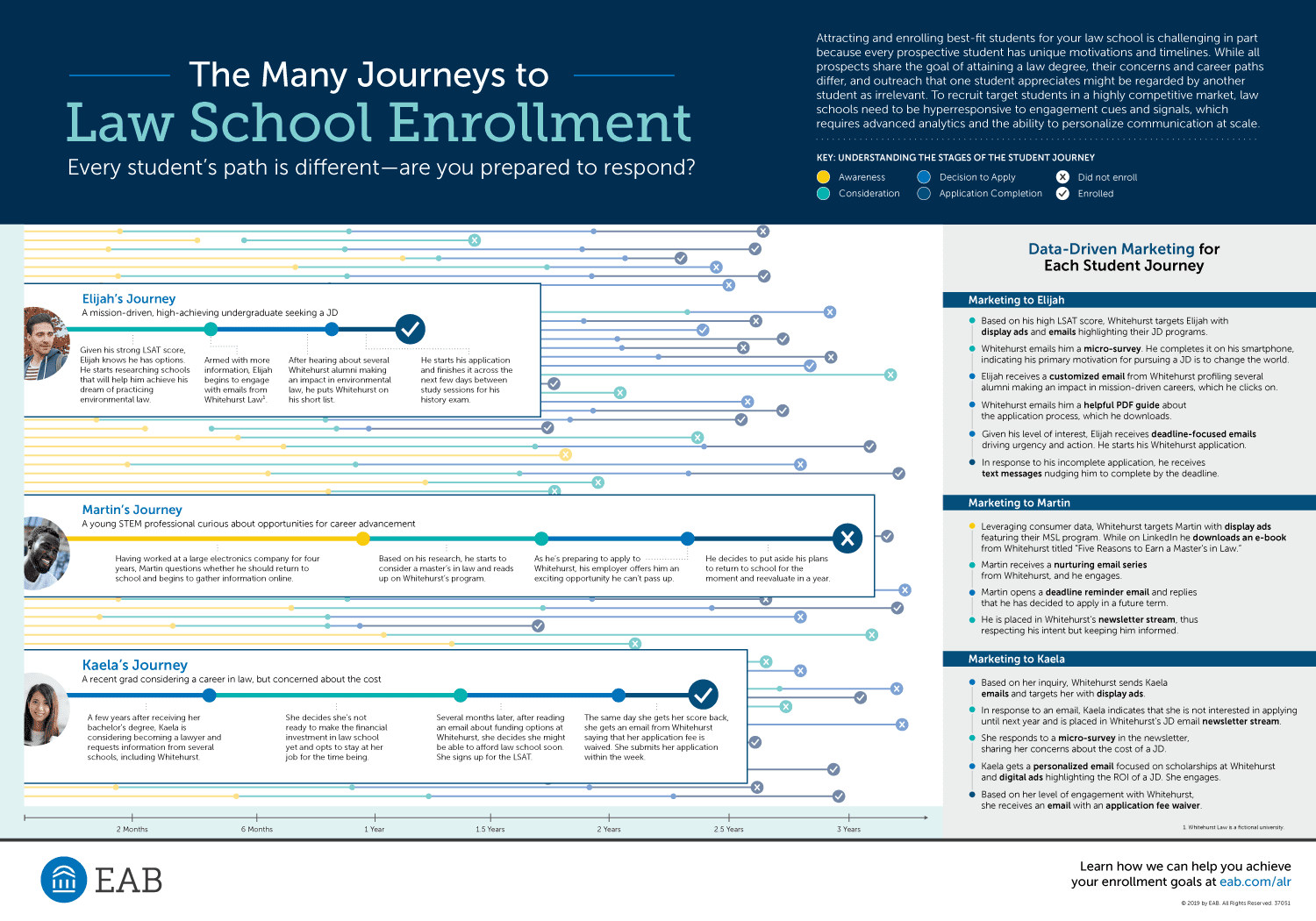How long does it take to become a lawyer? Typically, the journey requires seven years of dedicated education — four years of undergraduate study followed by three years of law school.
Considering this substantial time investment, you might wonder if a law degree is worth it. The path to becoming a lawyer involves more than just classroom time. We need to factor in LSAT preparation, which tests your reading comprehension and reasoning on a scale of 120 to 180, plus additional time for studying for the challenging bar exam — which, for perspective, had only a 44.6% pass rate in Texas as of February 2023.
Despite these challenges, the financial rewards can be significant. The national average salary for lawyers stands at $75,141 per year, though this varies widely based on location and specialization. In Texas, for example, lawyers earn an average of $166,620 annually, with some areas like Midland reporting even higher figures of $182,870.
However, be prepared for demanding work hours — lawyers typically log between 60 to 75 hours weekly, especially in high-pressure environments. In this comprehensive guide, we’ll walk you through each stage of becoming a lawyer, from undergraduate preparation to passing the bar and launching your legal career.
The Education Journey to Law

“In an age of globalization where the pace of knowledge and information are increasing at exponential rates, it is critical that legal professionals realize their education does not end with their J.D.” — David B. Wilkins, Lester Kissel Professor of Law, Vice Dean for Global Initiatives on the Legal Profession, Harvard Law School
The educational path to becoming a lawyer begins after high school and requires careful planning throughout your undergraduate years. Understanding each step of this journey will help you make informed decisions about your future legal career.
How long is law school?
Law school in the United States typically spans three years for full-time students. Part-time programs, designed for those balancing work or other commitments, generally take four years to complete. During your first year (1L), you’ll focus on mandatory foundational courses like torts, contracts, procedures, legal writing, criminal law, and constitutional law. These courses establish the bedrock of legal knowledge.
Your second year (2L) offers more flexibility to choose electives, although you’ll still need to fulfill requirements like professional responsibility courses. This is also when you’ll likely begin participating in extracurricular activities such as law review, moot court, or clinical programs. The final year (3L) provides even greater freedom to specialize in your areas of interest and prepare for the bar exam.
What to study in undergrad for law
One significant aspect of American legal education is that no specific undergraduate major is required for law school admission. Moreover, law schools accept students from virtually every academic discipline. While political science, philosophy, and history are common pre-law majors, the American Bar Association doesn’t recommend any particular undergraduate field.
Instead, focus on developing essential skills that law schools value. Choose courses that enhance your:
- Research and analytical thinking abilities
- Writing and communication skills
- Critical reasoning and problem-solving capabilities
Additionally, select challenging courses from demanding instructors, as this preparation serves as excellent groundwork for legal education.
Importance of GPA and extracurriculars
Your undergraduate GPA significantly impacts your law school prospects. The average median GPA for entering law students at 191 ranked schools was 3.55, whereas top 20 schools reported an average median GPA of 3.86. Furthermore, admissions committees consider your complete transcript, including course rigor and grade trends.
Beyond academics, extracurricular activities demonstrate your character and abilities. Activities that showcase legal skills, community service commitment, leadership potential, and perseverance particularly impress admissions officers. Law schools increasingly take a holistic approach to admissions, looking at what you can contribute to their community.
Rather than joining numerous organizations superficially, commit deeply to a few meaningful activities. This quality-over-quantity approach better demonstrates your ability to make an impact.
Testing and Applications
Beyond academics, the path to becoming a lawyer involves critical testing milestones and precise application timing. These requirements significantly impact your journey’s duration and success.
Preparing for the LSAT
The Law School Admission Test (LSAT) evaluates skills essential for first-year law school success, including reading comprehension, reasoning, and writing. Most schools require taking this exam by November/December for admission the following fall, though earlier testing in June or September/October is recommended.
For optimal LSAT preparation:
- Dedicate approximately 250-300 hours over three months (about 20 hours weekly)
- Take a practice exam before beginning your study regimen to establish a baseline score
- Adjust your lifestyle and work schedule to accommodate your preparation
- Create detailed weekly schedules in advance
- Allocate at least one hour weekly for vocabulary review
The LSAT is scored on a scale from 120 (lowest) to 180 (highest), with percentiles ranking your performance against fellow test-takers.
Law school application timeline
Most law schools open applications by September, with rolling admissions favoring early applicants. Start your process about a year before intended enrollment:
Register with LSAC’s Credential Assembly Service (CAS) around July, as most ABA-accredited schools require this service. Subsequently, request transcript submission to CAS in August and secure recommendation letters by September.
Begin drafting personal statements and applications in September, aiming to submit everything by late November or early December—regardless of official deadlines. File your FAFSA promptly after it opens on October 1.
Other exams like MPRE and FYLSE
The Multistate Professional Responsibility Examination (MPRE) is required for bar admission in all jurisdictions except Wisconsin and Puerto Rico. This two-hour, 60-question multiple-choice exam tests knowledge of professional conduct standards and is administered three times yearly.
California’s First-Year Law Students’ Examination (FYLSE or “Baby Bar”) primarily affects students at unaccredited law schools. This seven-hour test covers Contracts, Criminal Law, and Torts with a challenging 20% pass rate. Failing to pass within the first three eligible attempts limits credit for coursework.
Licensing and Bar Admission

After completing law school, aspiring attorneys face the final and most challenging hurdle on their journey to becoming licensed legal professionals. The licensing process typically takes several months to complete, depending on your jurisdiction and individual circumstances.
What is the bar exam?
The bar exam serves as the standard licensing examination for lawyers, coordinated by the National Conference of Bar Examiners (NCBE) but administered by individual state licensing boards. This challenging test typically spans two days and consists of multiple components:
- The Multistate Bar Examination (MBE): A standardized 200-question multiple-choice test covering six areas of law
- The Multistate Essay Examination (MEE): Used in most states, consisting of six 30-minute essay questions
- The Multistate Performance Test (MPT): Evaluates practical lawyering skills through realistic tasks
The bar exam is notoriously difficult, with some states having particularly challenging versions. Consequently, law students should view their entire education as preparation for this crucial test.
Moral character review and background checks
In addition to demonstrating legal knowledge, aspiring lawyers must prove they possess “good moral character.” This extensive background check involves:
First, applicants complete a detailed questionnaire covering their entire personal, financial, educational, and professional history. The process examines criminal records, financial responsibility, academic integrity, and professional conduct. Notably, the American Bar Association recommends weighing factors such as the applicant’s age at the time of concerning conduct, recency of conduct, seriousness, and evidence of rehabilitation.
Candor is absolutely critical during this process. In fact, character committees consider honesty a significant factor in determining good moral character.
Getting admitted to the state bar
After passing the bar exam and character review, candidates must typically:
Complete the Multistate Professional Responsibility Examination (MPRE), an ethics exam required in most jurisdictions. Then submit all final documentation and take an oath before a judge or notary public. Ultimately, once certified, your name is added to the official roll of attorneys in your state.
The entire licensing process, from law school graduation to official admission, typically takes between three to six months, though character and fitness reviews may extend this timeline.
Beyond the Degree: Starting Your Career
“Executive education and professional development offer venues through which lawyers can fine tune their skills and remain competitive.” — David B. Wilkins, Lester Kissel Professor of Law, Vice Dean for Global Initiatives on the Legal Profession, Harvard Law School
Earning your law license marks not the end but a new beginning in your legal journey. The career path after admission to the bar requires strategic planning and continuous professional development.
Finding your first legal job
Securing that initial legal position often demands resourcefulness and persistence. Successful job hunting typically combines online research with active networking. Check your law school’s career portal, legal-specific job boards, and LinkedIn alumni groups for opportunities. Accordingly, don’t overlook law firm websites, which frequently list openings not advertised elsewhere.
Networking remains the most powerful tool in your arsenal. As one experienced recruiter notes, “The most important element of your successful job search is effective and relentless networking”. Actively participate in bar associations and professional organizations to build connections that may lead to job opportunities.
For new attorneys, flexibility proves essential. Consider temporary, contract, or volunteer positions as entry points. These roles can transform into permanent positions while providing valuable experience and relationships. Even starting as a legal assistant or receptionist can build the foundation for advancement.
Specializing in a field of law
Once established, consider specializing to enhance your expertise and marketability. Legal specialization certification involves:
- Passing a specialty area examination
- Practicing law continuously for at least five years, with 25% of your time in the specialty
- Completing additional continuing education
- Demonstrating comprehensive experience
- Obtaining favorable peer evaluations
Popular specializations include corporate finance, bankruptcy, intellectual property, and elder law. Choose areas that align with your interests and market demand, as specialties fluctuate in popularity based on economic and technological changes.
Continuing legal education requirements
Throughout your career, you must fulfill continuing legal education (CLE) requirements to maintain your license. Most jurisdictions mandate approximately 45 hours of approved coursework every three years. This typically includes specialized ethics training—often three hours per reporting period.
Reporting deadlines and requirements vary by state, with some allowing excess credits to carry forward to the next period. Missing CLE deadlines can result in penalties, fines, or even license suspension, making proper planning essential for compliance.
Beyond mere requirements, CLE offers opportunities for growth and networking while keeping you current with legal developments—an investment in your long-term success as an attorney.
Conclusion
The Road to Legal Practice: Worth the Journey?
Becoming a lawyer undoubtedly requires significant commitment – approximately seven years of formal education followed by several months of exam preparation and licensing procedures. Though demanding, this path offers substantial rewards for those willing to persevere through the challenges.
The journey begins with undergraduate studies where developing research, writing, and analytical thinking skills matters more than your specific major. After securing a competitive GPA and LSAT score, three intensive years of law school build your legal foundation. Subsequently, bar exam preparation, character review, and official admission to the state bar complete your transformation into a licensed attorney.
First jobs often prove challenging to secure, therefore networking and flexibility become essential strategies for new graduates. Many successful attorneys start with temporary positions or in adjacent roles before finding their ideal placement. Additionally, specializing in a particular field significantly enhances your marketability and earning potential over time.
Last but certainly not least, legal education never truly ends. Continuing education requirements ensure attorneys remain current with evolving laws and practices. Read Also on how to become a lawyer to explore specific requirements in your state.
Despite the lengthy timeline and rigorous standards, legal careers offer meaningful work, intellectual stimulation, and financial stability. The national average salary of $75,141 potentially increases significantly with specialization and experience – reaching well above $160,000 in states like Texas. For those passionate about justice and problem-solving, few professions match the impact and satisfaction of legal practice. Your investment of time and effort today builds the foundation for decades of professional growth and accomplishment.
FAQs
Q1. What’s the fastest way to become a lawyer in the United States? The quickest path is typically through a 3+3 program, which combines three years of undergraduate studies with three years of law school, totaling six years. Some universities offer this accelerated option, allowing students to complete both degrees in less time than the traditional route.
Q2. How much do lawyers typically earn per hour? Lawyers’ hourly rates can vary significantly based on factors like location, specialization, and experience. While some attorneys may charge $400 or more per hour, the average hourly rate generally ranges from $100 to $500.
Q3. Is it possible to become a lawyer at age 25? Absolutely! There’s no age limit for law school admission. Many students enter law school in their mid-20s or later. The key is to manage your time effectively and balance your commitments, especially if you have other responsibilities.
Q4. How challenging is it to become a lawyer? Becoming a lawyer is generally considered challenging. It requires dedication through years of rigorous study, passing difficult exams like the LSAT and bar exam, and completing character and fitness reviews. The process can be particularly demanding in states with additional requirements, like California.
Q5. What are the continuing education requirements for lawyers? Most jurisdictions require lawyers to complete continuing legal education (CLE) to maintain their license. Typically, this involves around 45 hours of approved coursework every three years, including specialized ethics training. Requirements may vary by state, and failure to comply can result in penalties or license suspension.















